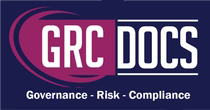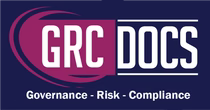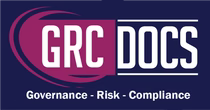SOC 2 Audit Management System Simplify, Automate, And Maintain Compliance
Introduction
In today's digital age, data security and privacy have become paramount. Businesses are under increasing pressure to protect the sensitive information of their clients and customers. The rapid digitization of services and the widespread use of cloud-based platforms have elevated the importance of data protection. For many organizations, achieving SOC 2 certification is a crucial step in demonstrating their commitment to security, confidentiality, and privacy. This certification serves as a testament to an organization’s dedication to safeguarding client information and maintaining trust. This article will explore the importance of a SOC 2 audit management system and how it can streamline the process of achieving and maintaining SOC 2 compliance. By understanding the intricacies of SOC 2 certification and the benefits of an audit management system, organizations can better position themselves in the competitive landscape.

What Is SOC 2 Certification?
SOC 2 (System and Organization Controls 2) certification is a framework developed by the American Institute of Certified Public Accountants (AICPA). It is designed to ensure that service providers securely manage data to protect the interests of their clients. This framework is not just a checklist; it's a comprehensive examination of an organization's internal controls related to information security. SOC 2 compliance is based on five "trust service principles": security, availability, processing integrity, confidentiality, and privacy. Each principle addresses a different aspect of data protection, ensuring a holistic approach to security. Organizations can choose which principles are relevant to their operations, allowing for a tailored compliance strategy.
Why Is SOC 2 Certification Important?
SOC 2 certification provides assurance to clients that a company is taking necessary steps to protect their data. This assurance is crucial in industries where data breaches can have significant legal and financial repercussions. It is especially important for technology and cloud computing companies that handle large volumes of sensitive information. These companies often rely on SOC 2 certification as a key differentiator in a crowded market. Achieving SOC 2 compliance can be a competitive advantage, as it demonstrates a company's commitment to data security and can open doors to new business opportunities. Moreover, it can enhance customer trust and confidence, leading to stronger business relationships and increased customer loyalty.
The Role Of A SOC 2 Audit Management System
What is a SOC 2 Audit Management System?
A SOC 2 audit management system is a software solution that helps organizations manage the entire SOC 2 audit process. It provides a centralized platform for tracking, organizing, and documenting all aspects of SOC 2 compliance. This includes everything from risk assessments and control implementation to evidence collection and audit reporting. The system serves as the backbone of an organization's compliance strategy, ensuring that all necessary steps are followed and documented. By using a dedicated system, organizations can streamline their compliance efforts and reduce the administrative burden associated with the audit process.
Benefits Of Using A SOC 2 Audit Management System
-
Streamlined Audit Process: A SOC 2 audit management system automates many of the manual tasks associated with the audit process, reducing the time and effort required to achieve compliance. This automation allows compliance teams to focus on strategic activities rather than getting bogged down in repetitive tasks.
-
Centralized Documentation: All documentation related to SOC 2 compliance is stored in a single location, making it easy to access and manage. This centralization ensures that all team members have access to the most up-to-date information, reducing the risk of miscommunication.
-
Real-Time Monitoring: The system provides real-time monitoring of compliance activities, allowing organizations to quickly identify and address any issues that may arise. This proactive approach to monitoring can help prevent minor issues from escalating into major compliance failures.
-
Improved Accuracy: Automated systems reduce the risk of human error, ensuring that all compliance activities are accurately documented and reported. This accuracy is crucial during audits, as discrepancies can lead to delays or even failures in achieving certification.
-
Scalability: As organizations grow and their compliance needs change, a SOC 2 audit management system can easily scale to accommodate new requirements. This scalability ensures that the system remains effective as the organization evolves, providing long-term value.
Implementing A SOC 2 Audit Management System
Steps to Implementing a SOC 2 Audit Management System
-
Assess Your Current Compliance Status: Before implementing a SOC 2 audit management system, it is important to assess your current level of compliance. This will help you identify any gaps that need to be addressed. A thorough assessment provides a clear starting point and helps in setting realistic compliance goals.
-
Choose the Right System: There are many SOC 2 audit management systems available, each with its own features and capabilities. It is important to choose a system that aligns with your organization's specific needs and requirements. Consider factors such as ease of use, integration capabilities, and customer support when making your decision.
-
Train Your Team: Once you have chosen a system, it is important to train your team on how to use it effectively. This will ensure that everyone is familiar with the system and can use it to its full potential. Training should be ongoing, with regular updates as new features or processes are introduced.
-
Integrate with Existing Systems: A SOC 2 audit management system should integrate seamlessly with your existing systems and processes. This will help to streamline the compliance process and reduce the risk of errors. Integration ensures that data flows smoothly between systems, enhancing efficiency and accuracy.
-
Monitor and Review: Once the system is in place, it is important to continuously monitor and review your compliance activities. This will help you identify any issues and make necessary adjustments to maintain compliance. Regular reviews ensure that the system remains aligned with organizational goals and regulatory changes.
Overcoming Challenges In SOC 2 Compliance
Implementing and maintaining SOC 2 compliance can be challenging, but a SOC 2 audit management system can help simplify the process. Some common challenges include:
-
Complexity of Requirements: SOC 2 requirements can be complex and difficult to understand. A SOC 2 audit management system provides clear guidance and documentation to help organizations navigate these requirements. It breaks down complex requirements into manageable tasks, making compliance more approachable.
-
Resource Constraints: Many organizations lack the resources needed to manage the SOC 2 audit process effectively. A SOC 2 audit management system automates many tasks, reducing the need for additional resources. This allows organizations to achieve compliance without overextending their teams.
-
Keeping Up with Changes: SOC 2 requirements are constantly evolving. A SOC 2 audit management system provides real-time updates and alerts to ensure that organizations stay up-to-date with the latest changes. Staying informed about regulatory changes helps organizations maintain compliance and avoid potential penalties.
Conclusion
Achieving and maintaining SOC 2 compliance is critical for organizations that handle sensitive data. A SOC 2 audit management system can help simplify the process, reduce the risk of errors, and ensure that all compliance activities are accurately documented and reported. By implementing a SOC 2 audit management system, organizations can demonstrate their commitment to data security and privacy, and gain a competitive advantage in the marketplace. This commitment not only protects client data but also enhances the organization's reputation.






